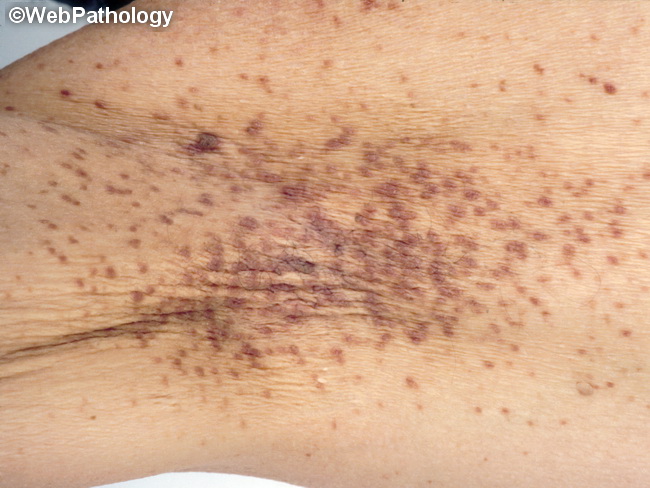Mastocytosis : Clinical Features


Comments:
Clinical Features: There are three clinical subtypes of cutaneous mastocytosis (CM) - maculopapular cutaneous mastocytosis (Urticaria pigmentosa), diffuse cutaneous mastocytosis, and mastocytoma of skin. Detailed features of skin lesions are discussed in subsequent sections. The most common forms of systemic mastocytosis (SM) are indolent. The aggressive forms, including aggressive systemic mastocytosis and mast cell leukemia, are uncommon. The clinical features of SM can be divided into four categories as follows: Constitutional symptoms like fatigue, fever, weight loss, and diaphoresis; skin manifestations such as pruritus, urticaria, dermatographism, flushing etc; mediator-related systemic events (secondary to release of histamine, eicosanoids, proteases and heparin), including abdominal pain, gastrointestinal or respiratory symptoms, anaphylaxis, flushing, syncope, headache, hypotension, tachycardia, and palpitations etc; and lastly, musculoskeletal symptoms such as bone pain, osteopenia/osteoporosis, fractures, arthralgias, myalgias. Physical findings in SM: Splenomegaly is usually minimal. Lymphadenopathy and hepatomegaly are less frequent. Organomegaly is generally seen in advanced disease. This photograph shows maculopapular cutaneous mastocytosis (urticaria pigmentosa). Numerous brown macules and papules are present in the axilla.



